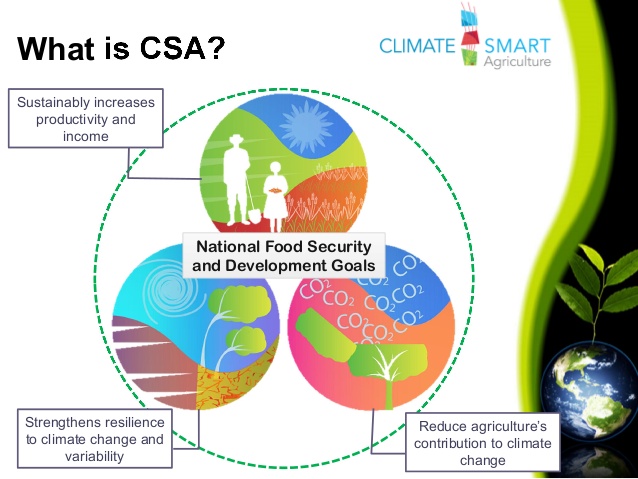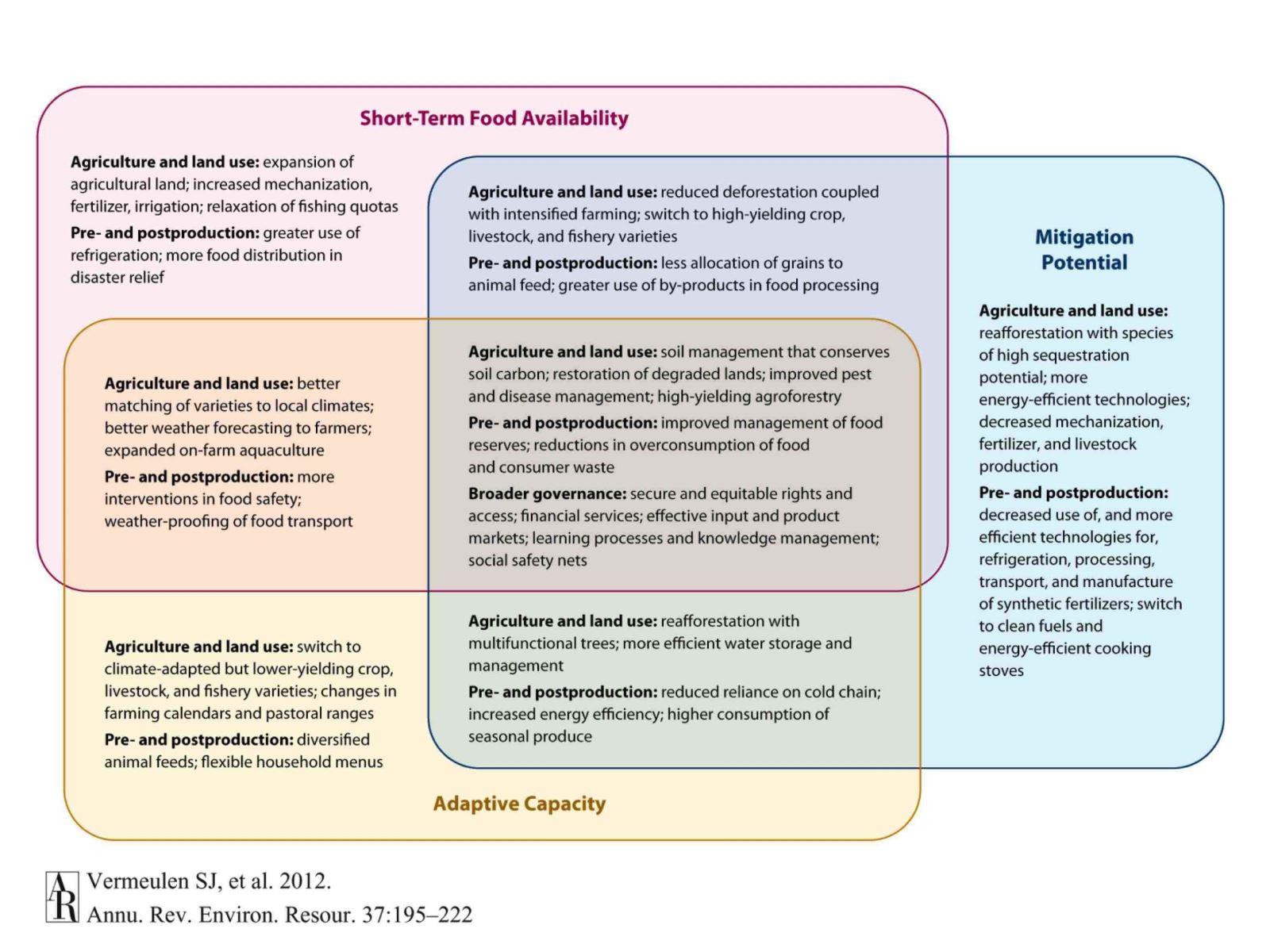-
About us
-
What is climate-smart agriculture?
Ngày đăng: 09/06/2017Lượt xem: 2456Climate-smart agriculture (CSA) may be defined as an approach for transforming and reorienting agricultural development under the new realities of climate change (Lipper et al. 2014).Introduction
Climate-smart agriculture (CSA) may be defined as an approach for transforming and reorienting agricultural development under the new realities of climate change (Lipper et al. 2014). The most commonly used definition is provided by the Food and Agricultural Organisation of the United Nations (FAO), which defines CSA as “agriculture that sustainably increases productivity, enhances resilience (adaptation), reduces/removes GHGs (mitigation) where possible, and enhances achievement of national food security and development goals”. In this definition, the principal goal of CSA is identified as food security and development (FAO 2013a; Lipper et al. 2014 ); while productivity, adaptation, and mitigation are identified as the three interlinked pillars necessary for achieving this goal.

Source: Presentation by Irina Papuso and Jimly Faraby, Seminar on Climate Change and Risk Management, May 6, 2013.
The three pillars of CSA
- Productivity: CSA aims to sustainably increase agricultural productivity and incomes from crops, livestock and fish, without having a negative impact on the environment. This, in turn, will raise food and nutritional security. A key concept related to raising productivity is sustainable intensification
- Adaptation: CSA aims to reduce the exposure of farmers to short-term risks, while also strengthening their resilience by building their capacity to adapt and prosper in the face of shocks and longer-term stresses. Particular attention is given to protecting the ecosystem services which ecosystems provide to farmers and others. These services are essential for maintaining productivity and our ability to adapt to climate changes.
- Mitigation: Wherever and whenever possible, CSA should help to reduce and/or remove greenhouse gas (GHG) emissions. This implies that we reduce emissions for each calorie or kilo of food, fibre and fuel that we produce. That we avoid deforestation from agriculture. And that we manage soils and trees in ways that maximizes their potential to acts as carbon sinks and absorb CO2 from the atmosphere.
Key characteristics of CSA
- CSA addresses climate change: Contrary to conventional agricultural development, CSA systematically integrates climate change into the planning and development of sustainable agricultural systems (Lipper et al. 2014).
- CSA integrates multiple goals and manages trade-offs: Ideally, CSA produces triple-win outcomes: increased productivity, enhanced resilience and reduced emissions. But often it is not possible to achieve all three. Frequently, when it comes time to implement CSA, trade-offs must be made. This requires us to identify synergies and weigh the costs and benefits of different options based on stakeholder objectives identified through participatory approaches (see figure 1).

Figure 1: Synergies and trade-offs for adaptation, mitigation and food security (Source; Vermeulen et al. 2012, p. C-3)
Cây dữ liệu:
- Liên kết website
- Thăm dò ý kiến
-
Bạn thấy nội dung trên chuyên trang CSA như thế nào?Phong phú, đa dạngTạm đượcCần bổ sung thêmBình chọnKết quả
|
Bạn thấy nội dung trên chuyên trang CSA như thế nào?
Tổng số:209 phiếu
|
|||
|---|---|---|---|
| Phong phú, đa dạng | 60,3 60,3% |
126 phiếu | |
| Tạm được | 3,3 3,3% |
7 phiếu | |
| Cần bổ sung thêm | 36,4 36,4% |
76 phiếu | |
Cục Trồng trọt - Bộ Nông nghiệp và Phát triển nông thôn
Địa chỉ: Số 2 Ngọc Hà, Ba Đình, Hà Nội
Điện thoại: 0243-8234651; FAX: 0243-7344967; Email: tt@mard.gov.vn
© Hệ thống cơ sở dữ liệu csa - Version 1.0
Được phát triển bởi Cty TNHH Tư vấn đầu tư và phát triển Tâm Việt







